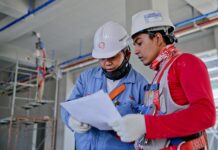In the fast-paced world of business technology, the efficiency of IT infrastructure plays a pivotal role in the success of any organization.
One often overlooked aspect that can significantly impact the performance of your IT systems is ventilation, especially when it comes to Computer Room Air Conditioning (CRAC).
Having a proper CRAC system is important, and it contributes to the optimization of IT infrastructure.
Understanding the Basics of Computer Room Air Conditioning (CRAC)
When it comes to IT infrastructure, the role of Computer Room Air Conditioning (CRAC) systems is paramount.
These specialized systems go beyond conventional air conditioning, creating a controlled environment crucial for the stability and longevity of data centers and server rooms.
Precision Engineering for Controlled Environments
CRAC systems are engineered with precision to establish and maintain controlled environments.
Their advanced features, including temperature and humidity control, set them apart from standard air conditioning units.
By ensuring a consistent environment, CRAC systems act as life support for IT infrastructure, safeguarding against hardware failures and downtime.
Life Support for IT Infrastructure
Investing in a reliable CRAC system is an investment in the life support of your IT infrastructure. These systems continuously monitor and adjust temperatures to prevent overheating.
By providing an ideal temperature range, CRAC systems not only enhance system reliability but also extend the lifespan of critical IT equipment, ensuring peak performance.
Temperature Control for Peak Performance
One of the primary functions of a CRAC system is to regulate the temperature within the server room.
By maintaining an ideal temperature range, the CRAC system safeguards the integrity of hardware components, ensuring they operate at peak performance levels.
Servers generate substantial heat during their continuous operation.
This meticulous temperature control not only enhances system reliability but also prolongs the lifespan of critical IT equipment.
- Continuous Monitoring: CRAC systems continuously monitor the temperature in
real time, ensuring that any deviations from the optimal range are promptly addressed.
- Automated Adjustments: Advanced CRAC systems feature automated temperature adjustments, responding to changing conditions without the need for manual intervention.
- Temperature Alarming: In the event of temperature anomalies, CRAC systems can issue alerts, allowing IT personnel to take preventive actions before any serious issues arise.
- Precision Cooling Zones: CRAC systems are designed with precision cooling zones, directing cool air specifically to areas where heat is generated, optimizing temperature distribution.
- Energy Efficiency Features: Many modern CRAC systems incorporate energy-efficient features, such as variable-speed fans, to adapt cooling capacity based on demand, reducing overall energy consumption.
Humidity Management: Striking the Right Balance
CRAC systems strike the right balance by preventing excessive humidity, which can lead to condensation-related issues, and avoiding low humidity that might induce static electricity.
Preserving Equipment Integrity
A well-calibrated CRAC system acts as a shield, preserving the integrity of delicate electronic components.
Equipped with humidity sensors and control mechanisms, these systems ensure a stable and secure environment for IT operations, guarding against equipment malfunction and irreversible damage.
Guardians Against Environmental Threats
CRAC systems act as guardians against environmental threats posed by improper humidity levels.
By meticulously controlling humidity, these systems mitigate risks associated with condensation and static electricity, contributing to the overall stability and reliability of the IT environment.
Airflow and Ventilation: Enhancing Efficiency
Proper airflow management is the unsung hero of IT infrastructure. The CRAC system ensures proper air circulation, directing cool air precisely where it’s needed and expelling hot air with efficiency.
This meticulous airflow control prevents the formation of hot spots, ensuring that every piece of equipment receives the cooling it requires.
Enhanced efficiency, a natural byproduct of effective ventilation, means reduced energy consumption, minimizing wear and tear on hardware, and ultimately, a smoother and more reliable IT operation.
In the world of IT, where every second counts, optimized airflow becomes a crucial contributor to overall system performance.
- Hot Spot Prevention: CRAC systems actively prevent the formation of hot spots by maintaining uniform airflow, ensuring that no area is subject to excessive heat.
- Cool Air Distribution: Through strategically placed vents and ducts, CRAC systems efficiently distribute cool air, reaching all corners of the server room to guarantee even cooling.
- Exhaust Management: Efficient ventilation includes the effective removal of hot air generated by IT equipment, preventing the buildup of heat that could compromise system performance.
- Redundancy Planning: High-quality CRAC systems often incorporate redundancy features, ensuring that even if one component fails, there’s a backup in place to maintain optimal airflow and cooling.
- Adaptive Airflow Control: Some CRAC systems come equipped with adaptive airflow control, dynamically adjusting cooling levels based on real-time conditions, providing a responsive and efficient solution to changing demands.
Energy Efficiency and Cost Savings
Beyond the immediate benefits to IT infrastructure, a well-optimized CRAC system contributes to broader organizational goals such as energy efficiency and cost savings.
By maintaining a precise balance of temperature, humidity, and airflow, businesses can significantly reduce their energy consumption, leading to lower operational costs.
The ripple effect of energy efficiency extends beyond the server room, aligning with corporate sustainability initiatives and environmental responsibility.
Implementing a CRAC system isn’t just an investment in IT infrastructure – it’s a strategic move towards a greener, more cost-effective future for your business.
Cooling the Way to Success – The CRAC System Advantage
In the dynamic realm of business technology, where every degree matters and every second counts, the unsung hero silently ensuring the heartbeat of IT infrastructure is the Computer Room Air Conditioning (CRAC) system.
From precise temperature control to orchestrated airflow management, the CRAC system plays a crucial role in optimizing performance, reliability, and energy efficiency.
Beyond technical nuances, it’s the assurance of a stable environment that safeguards against overheating, humidity imbalances, and inefficient airflow.
So, as businesses forge ahead into the digital future, remember that success is not just in the speed of data processing or the capacity of servers – it’s in the cool, calculated efficiency of a robust CRAC system.




































